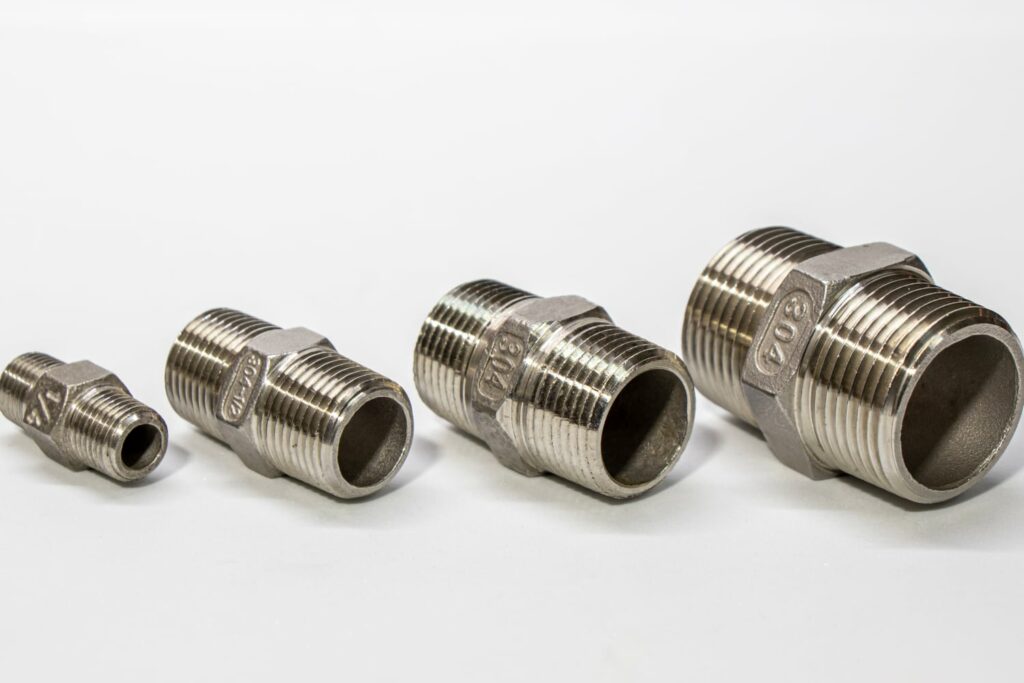There are a lot of decisions to make when deciding which shower head to buy.
From narrowing down whether or not you want a low flow shower head or a rain shower head, all the way to if you want to keep your wall mount shower head or switch over to the slide bar mount – the options are endless.
After deciding which kind of shower head is best for you, your bathroom, and your plumbing, you may wonder if you need to consider connection size.
The good news is that connection size is standardized for shower heads, so this means you typically don’t need to worry about your new shower head fitting into your water supply.
However, it would still be wise to ensure you understand how to measure your water supply pipe to ensure it fits with the standard you are buying the shower head in. This is especially important if you just moved to/from a different country with its own standardized shower head screw thread size.
Here’s a quick guide to help you understand how to measure your water supply pipe and the different standards for the screw thread.
Water Supply Pipe Measurement

To get the right measurement from your shower water supply pipe, simply measure the inner diameter. For the U.S. and Canada, the standard is 1/2 inch. However, 3/4 inch is possible, especially if you have a Garden Hose Thread, but it is rare and can accommodate a 1/2 inch connection with the usage of an adapter.
National Pipe Thread (NPT)
The National Pipe Thread (NPT) is the standard for pipe fittings and can come in several sizes depending on the appliance it is being used for. Typically, these screw threads taper to prevent the water running through the plumbing, like in a shower head, for example, from leaking out connection.
Related: How to Fix a Leaky Shower Arm
Since the National Pipe Thread is a national standard for the shower and often the tap, it is most commonly used in the U.S. but is sometimes used in other countries such as Canada, similarly for shower heads and the tap. Therefore, if you live in North America, odds are your water supply pipe, as well as compatible shower heads and their connections, will be most commonly measured at 1/2 inch NPT.
British Standard Pipe (BSP) Thread
On the other hand, if you are fitting a shower head from another country, you may see the abbreviation BSP, which stands for British Standard Pipe. British Standard Pipe (BSP) is a system of threading used for the screw thread on pipes and pipe fittings and is commonly used internationally for shower heads.
Although British Standard Pipe and National Pipe Thread have a standard size of 1/2 inch for shower heads, this does not necessarily mean they are compatible. This is due to their differences in thread forms. While British Standard Pipe threads have an induced angle of 55 degrees and rounded peaks and valleys, NPT screw threads instead have an induced angle of 60 degrees with flattened peaks and valleys.
This means that British Standard Pipe and National Pipe Thread connections may seem like they fit since they have the same diameter, but the difference in their respective screw thread will not make for a proper seal and cause water leakage from the shower head. To avoid an improper seal and prevent water from leaking out while connecting a BSP to an NPT screw thread or vice versa, you will need to use an adapter to connect the two.
Garden Hose Thread (GHT)
If you measure your pipe’s diameter and find it is 3/4 inches, it’s possible you have a Garden Hose Thread, since that is the standard size for it. Garden Hose Thread (GHT) is a system of threading used most often for hoses and hose fittings. Similarly to National Pipe Thread, it is commonly used in the United States but is sometimes also used internationally.
Garden Hose Thread has parallel screw threads, which means they often require an O-ring or a gasket to ensure the connection is leakproof for your shower head. In contrast, National Pipe Thread connections are typically tapered, which naturally prevents water leakage. Because of this and their differing standardized diameters, the GHT screw thread is not compatible with the NPT screw thread. You will need to use an adapter to connect one with the other, even if they are the same diameter.
FAQs
Here is a brief overview of the information we covered and additional information to consider to ensure you are making the compatible choice for your water supply pipe and shower head.
What is the most common shower head connection size in the United States?
The most common shower head connection size in the United States is 1/2 inch NPT. However, if your water supply pipe has a different diameter, but you still want to install a shower head with 1/2 inch NPT, you can use an adapter.
Do apartments also use 1/2 inch connections?
Typically yes, since 1/2 inch NPT is the standard in the U.S., It is still important to ask your landlord or measure to make sure since some outdated plumbing will have older pipes that can be a different size.
Can I connect a National Pipe Thread to a British Standard Pipe or vice versa if they are both 1/2 inch?
Not usually, no. Due to their aforementioned screw thread differences, trying to force the two together without an adapter will most likely result in water leaking. Make sure if you have a 1/2 inch NPT water supply pipe that, you match it with a 1/2 inch NPT shower head, and the same goes for BSP.
Can I change the connection size of my water supply pipe?
Yes, technically. However, this would be expensive, labor intensive, and require specialty plumbing to alter the water supply pipe and ensure proper installment of the new water supply pipe. The more inexpensive alternative would be utilizing an adapter that can properly connect your existing water supply pipe and incompatible shower head to one another’s screw thread.
Does the connection size affect the water pressure or performance?
Yes and no. While it is true that having a larger water supply pipe will increase the water flow, if you live in a low water pressure area or your current plumbing already allows for the water to flow at optimal speed, changing the water supply pipe may not fix any water pressure issues you may be having.
Additionally, putting in the work to switch to a larger water supply pipe or larger plumbing overall may make your water flow faster and stronger. Still, it will also cause the shower head to expel more gallons per minute and continuously cost you a bit extra on your water bill. Essentially, it widely depends on what area you live in, what kind of water system you have, and what existing plumbing or water supply pipe you have, whether or not your connection size is affecting the water pressure or performance from your shower head.
